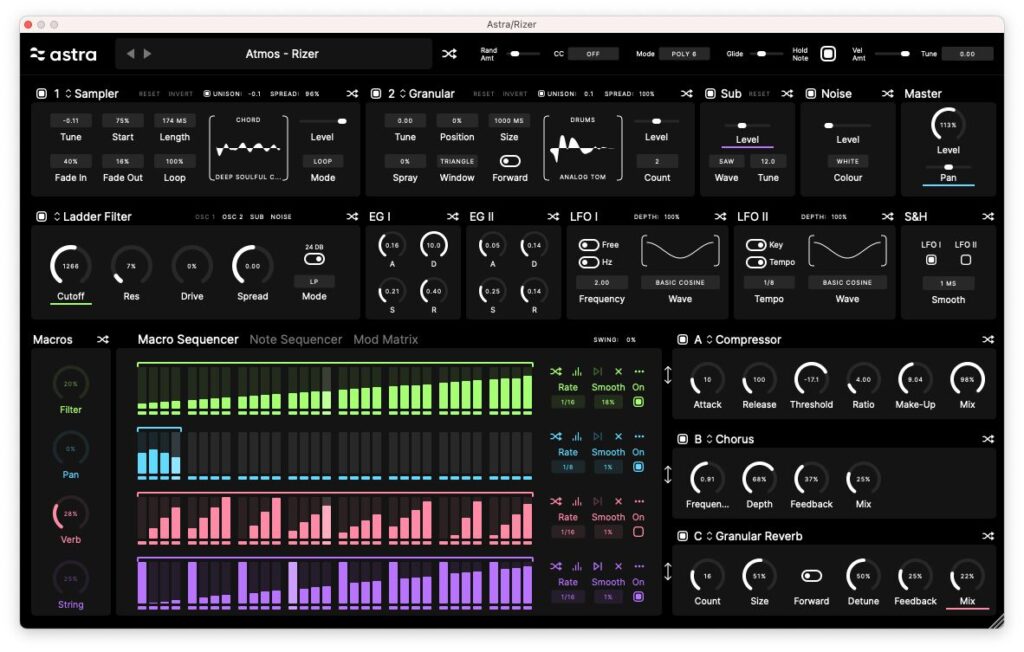
Today, you’ll learn how to make epic pads with Serum VST, one of the most versatile synths in music production.
Understanding the Power of Xfer Serum
When it comes to creating epic pads, Serum VST is the go-to synthesizer plugin for many music producers. This powerful tool offers unrivaled sound design capabilities, making it perfect for crafting captivating and lush pad sounds. In this guide, we’ll take a deep dive into the world of Serum VST and learn how to design stunning pads that will elevate your tracks to new heights.
Epic pads are a staple in many genres, from ambient and electronic to film scores and beyond. These rich, evolving sounds can add depth, emotion, and atmosphere to your music, making them an essential element of your production toolkit. With Serum VST, you’ll have all the tools you need to create your own unique pads that stand out from the crowd.
Mastering Serum VST’s Interface and Features
Before we start designing our epic pads with Serum, it’s crucial to familiarize yourself with the VST’s interface and features. This synthesizer plugin boasts a wealth of options, making it essential to understand the different components and how they can help shape your sound.
- Oscillators: At the heart of Serum VST are its two wavetable oscillators, which generate the fundamental tones for your pads. You can choose from a vast selection of wavetables or import your own to create distinctive textures and harmonics.
- Filters: Serum VST offers a variety of filter types, including low-pass, high-pass, band-pass, and more. These filters can be used to shape the frequency content of your sound, adding warmth, brightness, or other characteristics to your pads.
- Envelopes and LFOs: To add movement and evolution to your epic pads, you’ll want to make use of Serum VST’s envelopes and LFOs. These modulation sources can be assigned to various parameters, such as filter cutoff, wavetable position, or volume, allowing you to craft dynamic and evolving pads.
- Effects: Serum VST features a built-in effects rack, which includes a range of high-quality effects such as reverb, delay, chorus, and more. These effects can be used to add depth, space, and character to your pad sounds, helping to create that epic feel.
Crafting Your Epic Pads: Layering and Textures
One of the secrets to creating epic pads in Serum VST is layering and textures. By combining multiple oscillators, filters, and modulation sources, you can create complex, evolving sounds that captivate your listeners.
To start, load up a wavetable for each oscillator that provides a rich and harmonic foundation. Experiment with different wavetables and positions to find a combination that suits your taste. Next, apply a filter to each oscillator to shape their frequency content. A gentle low-pass or high-pass filter can add warmth or brightness to your sound, while more aggressive filter types can create interesting harmonic textures.
Now it’s time to add movement to your pads using envelopes and LFOs. Assign an envelope or LFO to the filter cutoff, wavetable position, or other parameters to create a sense of evolution and motion. You can also use multiple modulation sources to control different parameters, resulting in intricate and dynamic pad sounds.
Finally, add some finishing touches to your epic pads by incorporating effects. Reverb and delay can provide a sense of depth and space, while chorus or phaser effects can add subtle movement and shimmer. Don’t be afraid to experiment with the order of your effects chain, as this can drastically change the character of your pad sounds.
Fine-Tuning and Polishing Your Epic Pads
Once you’ve crafted the foundation of your epic pads, it’s time to fine-tune and polish your sounds to perfection. This stage involves tweaking various parameters, such as the attack and release times, to create the ideal balance between richness and clarity.
Adjust the attack time of your envelopes to control how quickly your pads fade in. Longer attack times can create a slow, evolving sound, while shorter attack times result in a more immediate and defined sound. Similarly, adjust the release time to control how long your pads linger after a note is released. Longer release times can help create a sense of ambience and space, while shorter release times can keep your pads tight and focused.
You may also want to experiment with Serum VST’s unison feature, which can add extra depth and dimension to your pads. By increasing the number of unison voices and adjusting the detune amount, you can achieve a lush, full sound that’s perfect for epic pads.
Finally, don’t forget to fine-tune your effects settings to achieve the desired sound. Adjust the reverb size and decay, the delay feedback and timing, or the chorus depth and rate to add the perfect finishing touch to your epic pads.
Epic Pads Cheatsheet for Serum VST
| Parameter | Setting | Tips |
|---|---|---|
| Oscillators | Rich wavetables | Experiment with different wavetables and positions for unique textures and harmonics |
| Filters | Low-pass or high-pass | Shape the frequency content to add warmth or brightness, or use more aggressive filters for interesting textures |
| Envelopes & LFOs | Modulate parameters | Assign to filter cutoff, wavetable position, etc., to create dynamic and evolving pads |
| Effects | Reverb, delay, chorus | Add depth, space, and character to your pads with a combination of high-quality effects |
| Fine-tuning | Attack & release times | Adjust for the perfect balance between richness and clarity |
Now that you’ve learned the ins and outs of creating epic pads in Serum VST, it’s time to put your newfound skills to the test. Experiment with different wavetables, modulation sources, and effects to create your own unique pads that will enhance your music production. The possibilities are endless, and with practice, you’ll be crafting stunning pad sounds that elevate your tracks to new heights. Happy sound designing!





